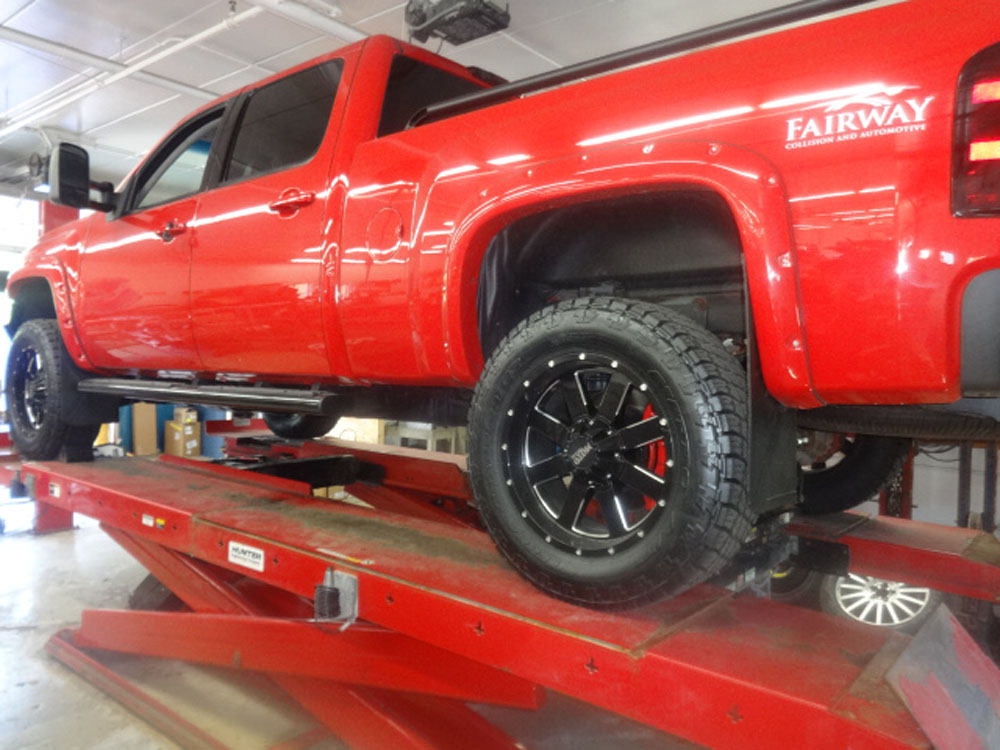
Drivers must be aware of the unique dangers of winter driving in Minnesota and how to avoid them to remain safe.
Ice on the Roadway
Ice is the number one winter driving hazard because it is difficult to see and can cause total loss of vehicle control. It occurs when the road is wet from precipitation, melted snow, or other water sources, and the surface temperature drops below freezing. Because the surface takes longer to warm up, ice can remain on the road even when the air temperature rises above freezing.
There are two types of ice that make driving hazardous: surface ice and black ice. Both can hinder your tires’ traction on the road, making it difficult to steer and stop. Black ice is more hazardous because its thin layer makes the road appear wet rather than icy. It forms at night or early in the morning, and the road surface has a matte appearance as opposed to the glossy appearance of surface ice. Generally, surface ice can be detected in time to slow down or avoid it. Until you hit a patch of black ice and lose control of your vehicle, black ice is often unnoticed.
Limited Visibility
This winter driving hazard frequently has more to do with your vehicle’s condition than the road. Obviously, visibility is impaired during a snowstorm or when passing vehicles kick snow onto your windshield. However, visibility can also be impaired on cold, clear nights. This could occur for a variety of reasons.
The primary cause is accumulation of ice or snow on your windshield and outside mirrors. It does not take much to impair one’s line of sight to an unsafe level. If snow has accumulated on your vehicle’s hood or roof, it can impede your visibility by blowing onto your windshield. Therefore many states have passed laws requiring drivers to clear their vehicles of snow and ice before driving.
Additionally, poor visibility can occur within the vehicle. Condensation on the inside of your windshield can make it nearly impossible to see if your heater or rear window defroster do not function properly. If your heating system is malfunctioning, have it fixed before winter arrives!
Tires with Poor Tread and Pressure
Cold air decreases tire pressure, so tires that were properly inflated during the warmer months may not have sufficient PSI during the winter. Colder temperatures necessitate a more frequent inspection of tire pressure, according to auto safety experts.
Worn tire treads are dangerous enough in the summer, but they pose a much greater threat on roads covered in snow or ice. If you reside in an area that receives a significant amount of snow for several months, the best course of action is to equip your vehicle with snow tires and chains for extreme road conditions. If you live in an area that receives light to moderate snowfall, you can typically get by with standard tires if the treads are in good condition.
Failed Battery
This winter driving hazard has more to do with the inability to drive than with hazardous road conditions. The cold makes it more difficult for batteries to provide sufficient charge to start automobile engines. The cost increases as the temperature decreases. If you are unprepared, being stranded in the cold because your car won’t start can quickly turn into a bad situation. To avoid this unpleasant situation, keep jumper cables or a portable power source in your vehicle, or purchase roadside assistance coverage.
Freezing Temperatures
Cold weather can be hazardous to both you and your vehicle, and there are numerous ways to become stranded in subfreezing temperatures besides a dead battery. Experts in auto safety recommend keeping an emergency kit in your vehicle throughout the winter. Include blankets, dry clothes, a flashlight, flares, water, and snacks.
Salt on the Highway
Most individuals do not consider salt to be a winter driving hazard. However, despite being effective at removing snow and ice from road surfaces, its corrosive nature can damage the exterior and undercarriage of your vehicle. To avoid this type of damage, frequently wash your vehicle to prevent salt buildup. Salt quickly eats through paint and causes rust on the underlying metal.
Preparing Your Vehicle for Winter Driving Dangers
Before the first snowflake falls, you must prepare your vehicle to operate safely in cold weather. • Ensure that your brakes, defroster, heater, exhaust system, and lights are all functioning properly.
- Examine your windshield wipers and replace them if necessary.
- Examine your tires for low tread wear, sidewall cracks, and other potential issues.
- Maintain a set of snow chains on your vehicle throughout the entire winter driving season.
- Perform an oil change and switch to cold-weather-formulated oil.
- Determine the age of the battery. Clean the connections and ensure that the cables are securely attached.
- Fill your radiator with a 50/50 mixture of water and antifreeze.
Safe Driving Practices for Winter Roads
Driving in severe winter conditions necessitates heightened awareness and vigilance. Drive more slowly than usual and allow yourself additional time to reach your destination. Pay closer attention to the surrounding vehicles. You never know when a vehicle will spin out next to you. Create a large safety zone around your vehicle so that you can respond quickly if someone approaches it.
- Increase the distance between your vehicle and the vehicle in front of you to avoid winter driving hazards. Allow for a greater stopping distance than usual to avoid slamming on the brakes, particularly when traveling downhill.
- Drive more slowly and with extra caution on bridges, overpasses, and shady areas where ice may form. Do not use cruise control on icy or snow-covered roads.
- Maintain a clean windshield and windows. Always keep a snow brush or scraper in your vehicle.
- When driving in the snow, keep your lights on; do not use your high beams.
- Give snowplows plenty of space. Frequently, the plow blades extend several feet on each side of the truck, making them difficult to see.
- Carry your cell phone with you at all times (avoid using it while driving), especially on long trips or in remote areas, in case you need to call for assistance. Ensure that others are aware of your travel plans and route before departing.
Preparing yourself and your vehicle for the hazards of winter driving will help keep you, your loved ones, and other drivers safe on the road.


